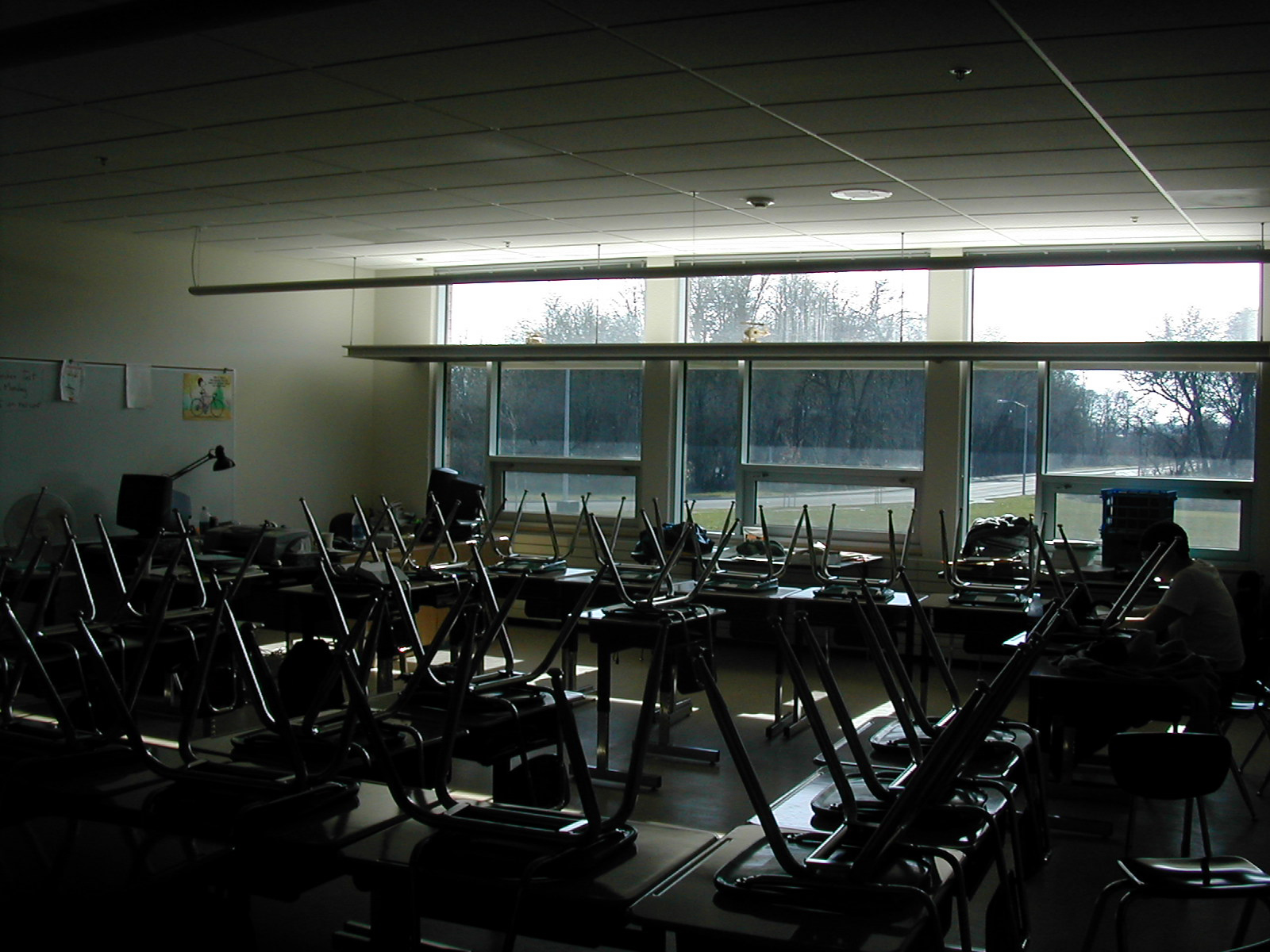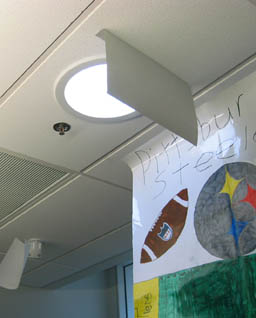

Our initial impression that there was a gradient of light in the typical classroom was corroborated by this study.
We were able to quantify the contribution of each of four light sources. Each contribution was individually measured and calculated as a percentage of the whole, or total amount of light available at the student desktop, and its light emittance graphed throughout the room. The comparisons to a total refer to the unadjusted lighting conditions present the time period we collected our data.
A more complete post occupancy evaluation (POE) of this kind would need to account for orientation, weather, time of day and season. Our study focused on a South-facing classroom. It is simply a snapshot glimpse of a single four-hour period measured on two separate days and does not attempt to suggest that similar results would be measured any other time of the day or year. We were fortunate that the weather was sunny one day and overcast the other. This way we had the chance to observe the lighting system response to very different solar radiation amounts.
Boora has provided a design solution that combines both high-tech and low-tech lighting control systems into an integrated lighting strategy. The room occupants have access to the two low-tech controls: a wall switch (off only) and venetian blinds (off only). Even so, teachers could not totally darken their rooms in order to watch videos, for instance, because the solatubes and clerestory windows did not have blinds or dampers. We observed user adaptations such as paper shrouds and shields taped around the solatube diffusers to block extra light.
It was also clear that the teachers were adjusting to an automated system. Lights turn on only by automated control. Because the occupancy sensor has a timer function, we observed a paper flap user adaptation to trigger the system on. This flap was connected to a string that followed a paperclip pulley system along the ceiling from the teacher’s desk.
Because different photo sensors control the two fluorescent light banks, both are usually not on together. They could only be on together at night (during occupancy) or during extreme low light conditions (i.e. storm). The row of lights near the clerestory windows is part of the hallway zoning (controlled by a roof top photocell set to 75fc). The other row is part of the classroom zoning (controlled by a photocell located between the lights and the window and set to 45fc).
In design, it was theorized that the light contribution from the clerestory windows and the solatubes could compensate for the artificial light on this side of the room. Our data does not support this thoery. From our observations it appears that the classroom lighting scheme would benefit from adding the door bank of fluorescent lights to window bank zone I.









